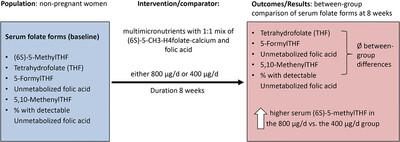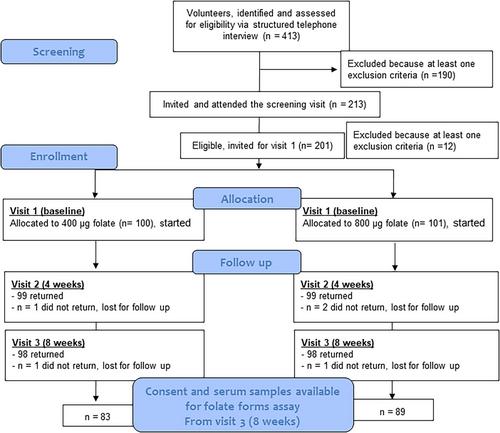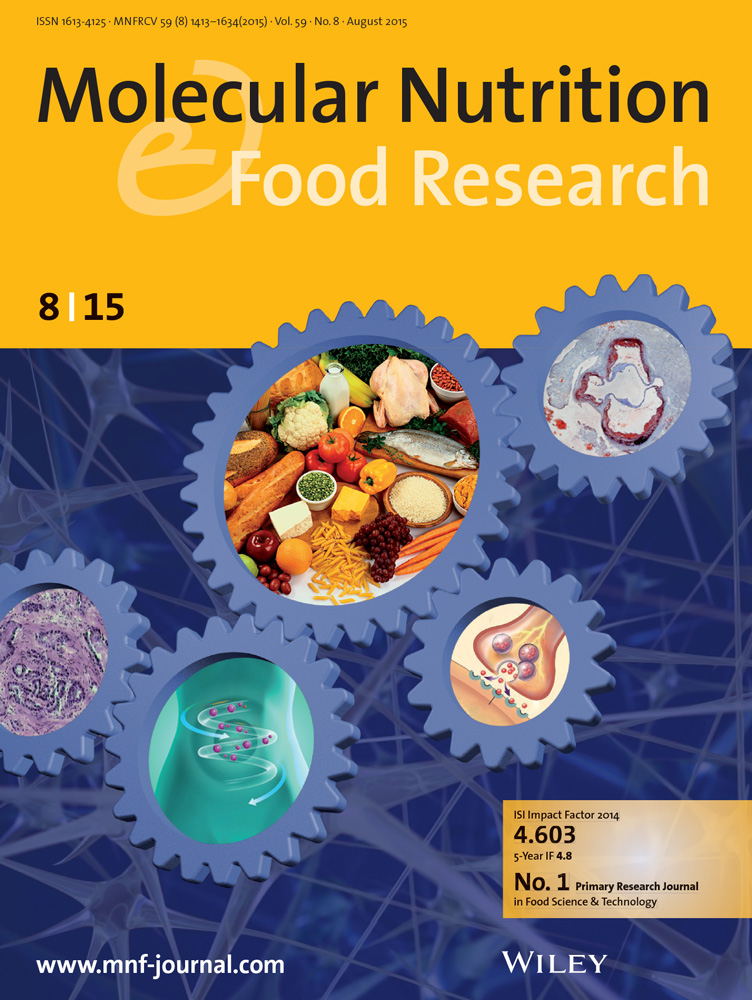Serum Concentrations of Folate Forms Following Supplementation of Multimicronutrients with 400 µg or 800 µg Mix of (6S)-5-Methyltetrahydrofolate and Folic Acid (1:1) in Women of Childbearing Age
Abstract
Scope
A mixture of (6S)-5-methyltetrahydrofolate-calcium salt ((6S)-5-MTHF-Ca) and folic acid (FA) from multimicronutrient supplements may show a dose-dependent effect on serum folate concentrations.
Methods and results
The study compares fasting concentrations of serum folate spices after 8 weeks of either 400 or 800 µg day−1 of 1:1 folate mixture in 172 nonpregnant women. Serum (6S)-5-MTHF concentrations raise from a mean (SD) of 19.1 (13.4) to 73.9 (19.6) nmol L−1 in the 800 µg group and from 17.5 (9.4) to 54.5 (21.1) nmol L−1 in the 400 µg group (p < 0.001 within-group changes). The raise in serum (6S)-5-MTHF is stronger in the 800 µg compared to the 400 µg group (p < 0.001 between-group). The prevalence of FA concentrations ≥0.20 nmol L−1 increases between baseline and week 8 in both groups, but is not different between the groups (p = 0.116). The mean percentage of (6S)-5-MTHF of total serum folate increases in both intervention groups, but is not different between the groups at 8 weeks (95.5 (4.1)% versus 94.4 (5.7)%, p = 0.309).
Conclusions
Supplementation of multimicronutrients with 800 µg folate mix for 8 weeks causes higher serum (6S)-5-MTHF concentrations, but not a higher prevalence of detectable FA compares to 400 µg folate.



 求助内容:
求助内容: 应助结果提醒方式:
应助结果提醒方式:


